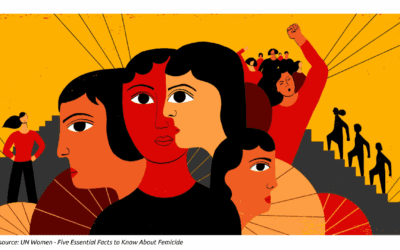Mental health challenges among physicians are increasingly recognised as a serious public health issue. Studies reveal alarmingly high rates of burnout* (63% of US physicians in 2022), depression (33%), anxiety (24%), post-traumatic stress disorder (10%), and a heightened risk of suicide, particularly among female physicians (53%), compared with the general population.
The demanding nature of medical practice, characterised by frequent exposure to human suffering, long and irregular working hours, and high emotional intensity, combined with personality traits such as perfectionism and an overwhelming sense of duty, makes physicians particularly vulnerable to psychological distress.
Potential Implications for Healthcare Delivery
The high prevalence of mental health disorders among doctors has significant implications for healthcare delivery and workforce sustainability. This growing concern threatens ongoing efforts to improve quality, safety, affordability, and access to care.
Research indicates that physicians experiencing burnout are more likely to report recent medical errors, fact medical malpractice claims, and exhibit reduced professionalism or unconscious bias, particularly towards Black patients. Moreover, burnout is associated with increased staff turnover and reduced clinical hours, further straining already stretched healthcare systems.
Substance use disorders (SUDs) also pose a notable concern. Between 8% to 15% of physicians experience SUDs, while problematic alcohol use (defined as any harmful or risky drinking), affects up to 27% of practitioners. Although these rates are broadly comparable to those in the general population, certain high-risk specialties such as anaesthesiology, emergency medicine, and psychiatry show higher vulnerability.
Reluctance to Seek Help
Despite the proven effectiveness of mental health interventions, only 13% to 36% of physicians experiencing mental health difficulties seek professional help. This reluctance negatively impacts their well-being, patient care quality, and the overall stability of the healthcare system. Understanding and addressing the barriers to treatment is therefore vital.
Major Barriers to Care
Stigma remains one of the most significant barriers. Many physicians equate mental illness with personal weaknesses, and this perception often intensifies during medical training. Studies show that fear of stigma prevents 30% of early medical students, 53% of final-year students, and 58% of resident physicians from seeking help.
The need for confidentiality is another key concern. This desire grows stronger throughout training and into clinical practice, with 37% of medical students, 57% of first-year residents, and almost two-thirds of practicing physicians citing confidentiality as a primary barrier.
From an organisational perspective, lack of time is the most commonly reported obstacle, cited by 43% to 92% of physicians and trainees. This issue is exacerbated by demanding work schedules and a deeply ingrained sense of duty. A so-called “shadow contract” often exists, whereby doctors feel obligated to work through illness to protect colleagues or patients.
Additionally, access to care can be challenging. Due to confidentiality concerns, many physicians prefer to seek support outside their professional networks, creating logistical and financial barriers. Approximately one in five physicians report they would pay out-of-pocket to avoid mental health treatment appearing on insurance records. Although doctors are generally financially secure, these additional costs can deter help-seeking, particularly among trainees.
Inadequate Self-Care Within the Medical Profession
Medical culture has long rewarded stoicism and resilience while discouraging vulnerability. Many physicians minimise their own distress, prioritising patient care over personal well-being. Indeed, 96% of general practitioners believe that doctors must maintain the appearance of perfect health, reinforcing a damaging ‘hero’ narrative that normalises exhaustion and emotional strain.
Self-medicating behaviours are also widespread. Between 9% to 15% of physicians report self-prescribing antidepressants, and a further 7% receive them informally from colleagues. Among psychiatrists, over half admit they would prefer self-treatment or informal advice rather than formal mental health support. This trend begins early: 75% of interns report preferring to manage mental health issues independently.
Alarmingly, those most affected are also the least likely to seek appropriate care. Physicians with moderate to severe depression are two to three times more likely than those with mild symptoms to self-prescribe antidepressants (30% vs 10%) or avoid treatment due to confidentiality concerns (51% vs 17%).
Overcoming Barriers and Moving Forward
Several multilevel interventions have been introduced, including educational initiatives, leadership role modeling, peer support schemes, confidential counselling, and anonymous screening programmes.
However, despite growing research on physician mental health, significant knowledge gaps remain, particularly regarding barriers to care. The development of standardised tools to assess stigma and help-seeking behaviours would enhance both research and institutional monitoring of workforce well-being.
Future studies should explore how policy frameworks and regulatory environments influence mental health care utilisation and how interventions can be effectively tailored across different clinical settings. More granular research into physician suicide (especially among female and high-risk speciality doctors), is also essential to identify gender-specific challenges and evaluate intervention effectiveness.
Conclusion
Improving mental health support for physicians is a public health imperative. While a range of strategies are needed, removing barriers to care offers the most immediate and actionable opportunity to reduce untreated mental health conditions and prevent physician suicide.
A sustained commitment to this issue, coupled with innovative, evidence-based approaches, will be critical in promoting physician well-being, safeguarding the healthcare workforce, and ensuring the delivery of high-quality patient care.
* Burnout: According to the World Health Organization, burnout is an occupational phenomenon that results from chronic, high levels of occupational stress. The job demands-resources model proposes that it is the balance between job demands (e.g., workload) and job resources (e.g., autonomy), filtered through an individual’s capacity to effectively deal with work stressors, that determines where an individual falls on the spectrum from thriving at work to suffering from a high level of burnout. Personal choices related to sleep, exercise, and other stress-reducing behaviours have been previously demonstrated to relate to the risk of burnout among physicians.
Sources:
- Dyrbye L.N. et al. Smartwatch Use and Physician Well-Being A Randomized Clinical Trial. JAMA Network Open. 2025;8(8):e2527275. doi:10.1001/jamanetworkopen.2025.27275
- Saddawi-Konefka D. et al. Reducing Barriers to Mental Health Care for Physicians. An Overview and Strategic Recommendations. Clinical Review & Education Special Communication – JAMA. doi:10.1001/jama.2025.12587 Published online August 14, 2025











